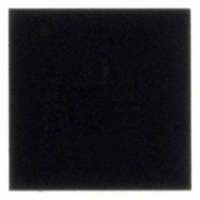ISL6336BIRZ Intersil, ISL6336BIRZ Datasheet - Page 29

ISL6336BIRZ
Manufacturer Part Number
ISL6336BIRZ
Description
IC CTRLR PWM SYNC BUCK 48-QFN
Manufacturer
Intersil
Datasheet
1.ISL6336BCRZ.pdf
(31 pages)
Specifications of ISL6336BIRZ
Applications
Controller, Intel VR11.1
Voltage - Input
3 ~ 12 V
Number Of Outputs
1
Voltage - Output
0.5 ~ 1.6 V
Operating Temperature
-40°C ~ 85°C
Mounting Type
Surface Mount
Package / Case
48-VQFN
Lead Free Status / RoHS Status
Lead free / RoHS Compliant
and small output-voltage ripple as outlined in “Output Filter
Design” on page 28. Choose the lowest switching frequency
that allows the regulator to meet the transient-response
requirements.
Switching frequency is determined by the selection of the
frequency-setting resistor, R
Phase Buck Converter with Thermal Compensation” on
page 5 and “Typical Application - 4-Phase Buck Converter
with Coupled Inductors” on page 6). Equation 3 is provided
to assist in selecting the correct value for R
Input Capacitor Selection
The input capacitors are responsible for sourcing the AC
component of the input current flowing into the upper
MOSFETs. Their RMS current capacity must be sufficient to
handle the AC component of the current drawn by the upper
MOSFETs that is related to duty cycle and the number of
active phases.
FIGURE 21. NORMALIZED INPUT-CAPACITOR RMS CURRENT
FIGURE 22. NORMALIZED INPUT-CAPACITOR RMS CURRENT
0.3
0.2
0.1
0.3
0.2
0.1
0
0
0
0
I
I
L(P-P)
L(P-P)
I
I
I
L(P-P)
L(P-P)
L(P-P)
vs DUTY CYCLE FOR 2-PHASE CONVERTER
vs DUTY CYCLE FOR 3-PHASE CONVERTER
= 0
= 0.25 I
0.2
= 0
= 0.5 I
= 0.75 I
0.2
O
O
DUTY CYCLE (V
O
DUTY CYCLE (V
0.4
0.4
T
29
I
I
(see “Typical Application - 5-
L(P-P)
L(P-P)
= 0.5 I
= 0.75 I
0.6
0.6
O/
O
/V
V
IN
IN
O
)
O
)
T
.
0.8
0.8
1.0
1.0
ISL6336B
For a 2-phase design, use Figure 21 to determine the
input-capacitor RMS current requirement given the duty
cycle, maximum sustained output current (I
of the per-phase peak-to-peak inductor current (I
I
will minimize the total number of input capacitors required to
support the RMS current calculated. The voltage rating of
the capacitors should also be at least 1.25x greater than the
maximum input voltage.
Figures 22 and 23 provide the same input RMS current
information for three and four phase designs respectively.
Use the same approach to selecting the bulk capacitor type
and number, as previously described.
Low capacitance, high-frequency ceramic capacitors are
needed in addition to the bulk capacitors to suppress leading
and falling edge voltage spikes. They result from the high
current slew rates produced by the upper MOSFETs turning
on and off. Select low ESL ceramic capacitors and place one
as close as possible to each upper MOSFET drain to
minimize board parasitic impedances and maximize
suppression. More than one of these low ESL capacitors
may be needed.
MULTI-PHASE RMS IMPROVEMENT
Figure 24 is provided as a reference to demonstrate the
dramatic reductions in input-capacitor RMS current upon the
implementation of the multiphase topology. For example,
compare the input RMS current requirements of a 2-phase
converter versus that of a single phase. Assume both
converters have a duty cycle of 0.25, maximum sustained
output current of 40A, and a ratio of I
single phase converter would require 17.3A
capacity while the two-phase converter would only require
10.9A
when output current is increased and additional phases are
added to keep the component cost down relative to the
single phase approach.
O
FIGURE 23. NORMALIZED INPUT-CAPACITOR RMS CURRENT
. Select a bulk capacitor with a ripple current rating which
0.3
0.2
0.1
RMS
0
0
I
I
L(P-P)
L(P-P)
. The advantages become even more pronounced
vs DUTY CYCLE FOR 4-PHASE CONVERTER
= 0
= 0.25 I
0.2
O
DUTY CYCLE (V
0.4
I
I
L(P-P)
L(P-P)
0.6
= 0.5 I
= 0.75 I
O/
L,P-P
V
IN
O
)
O
to I
O
RMS
0.8
), and the ratio
O
of 0.5. The
L(P-P)
current
August 31, 2010
1.0
FN6696.2
) to











